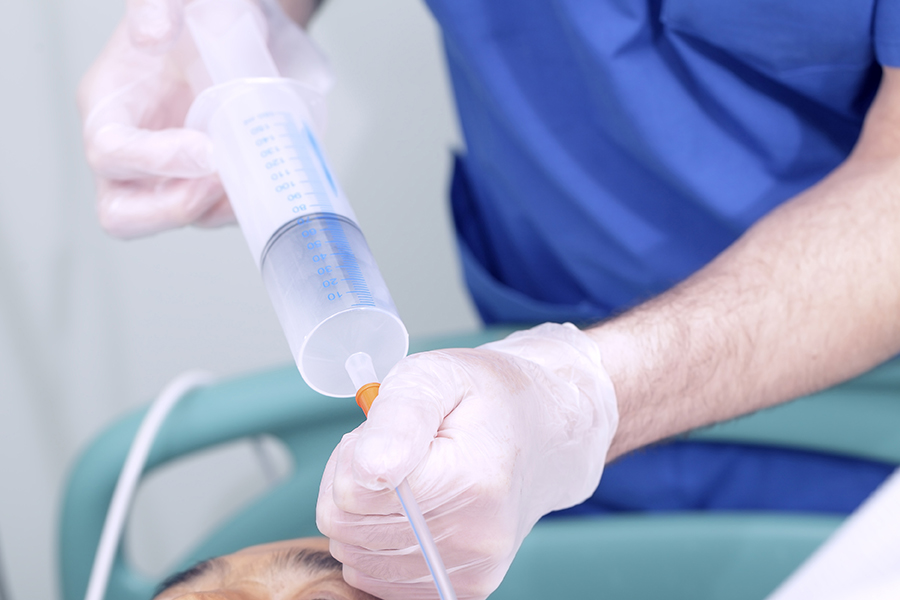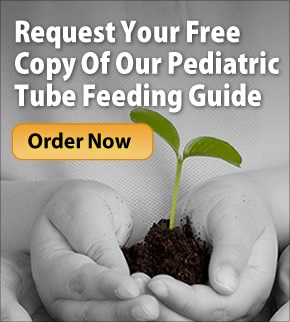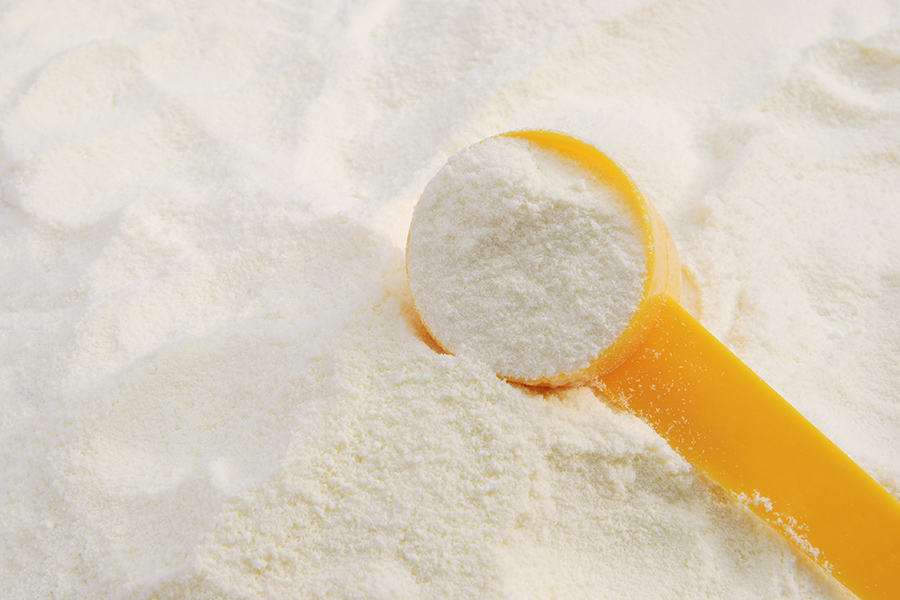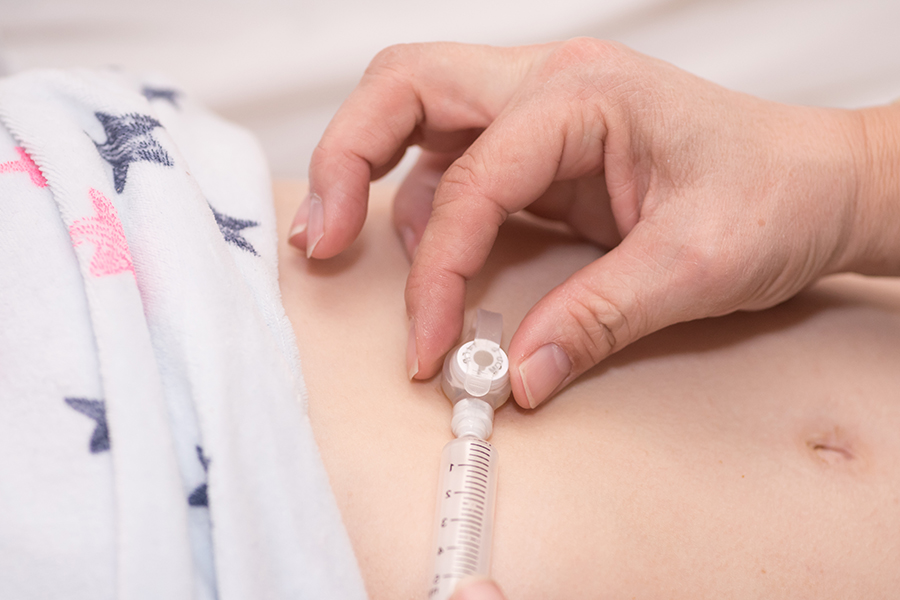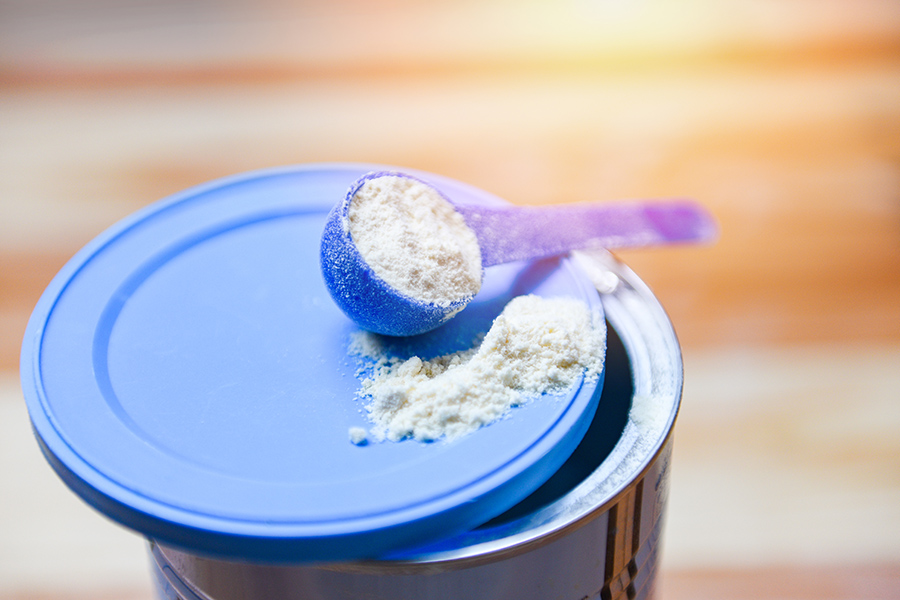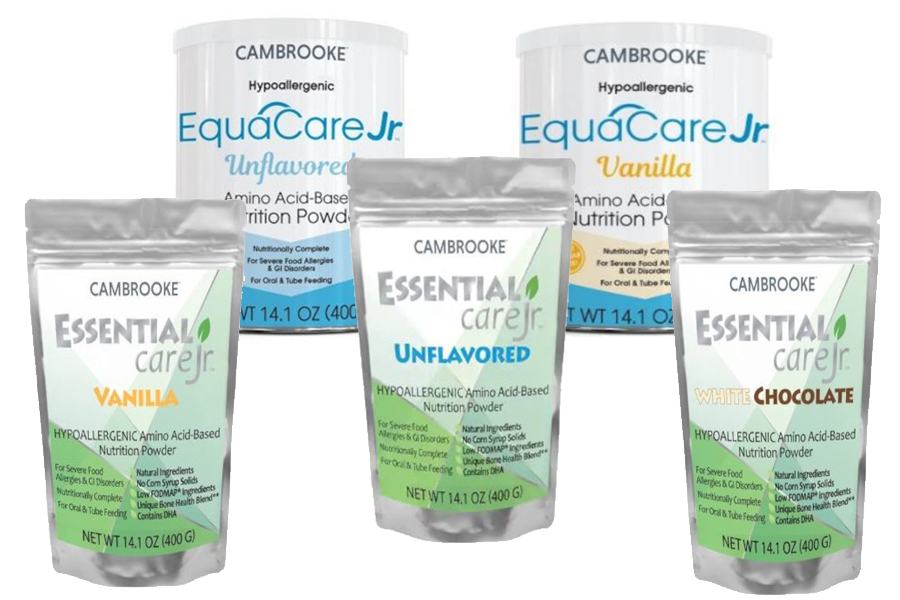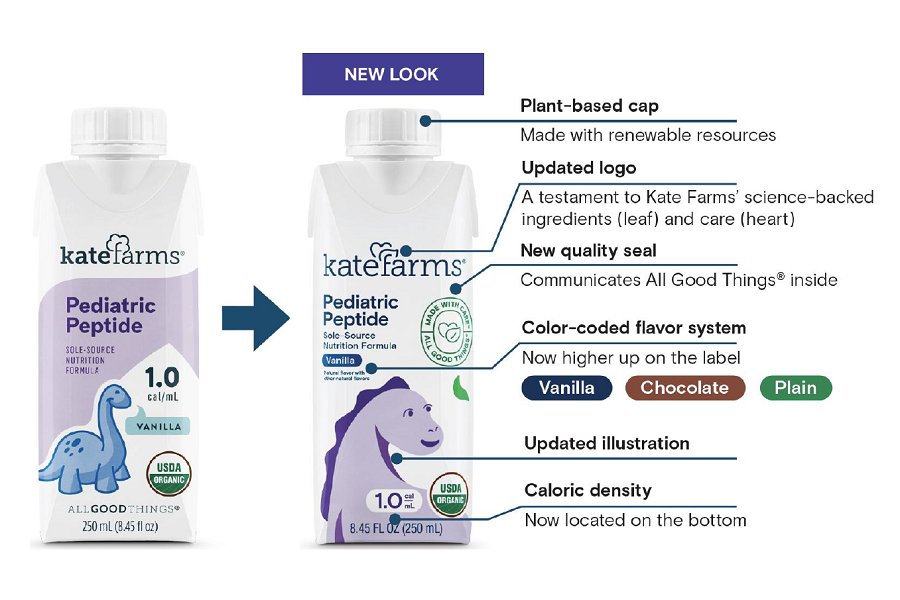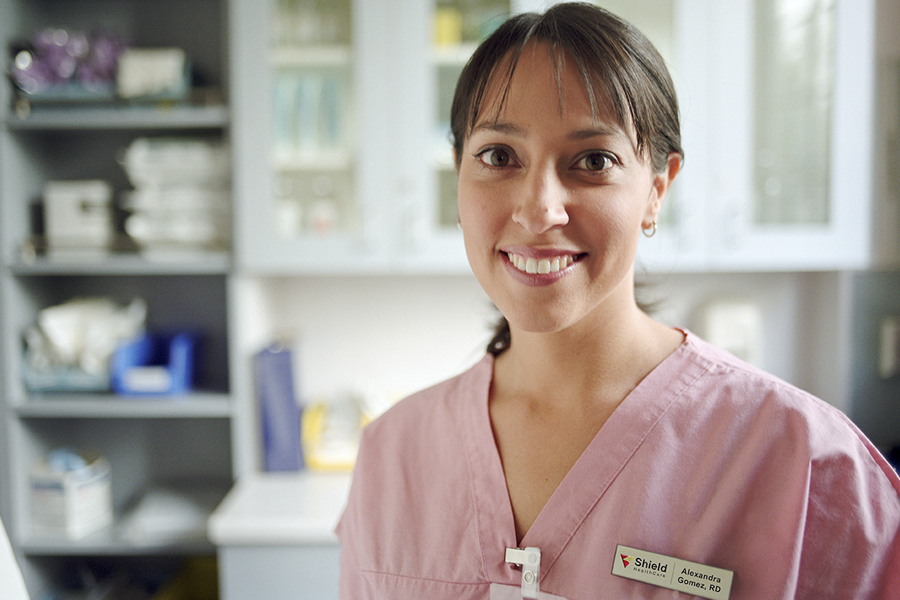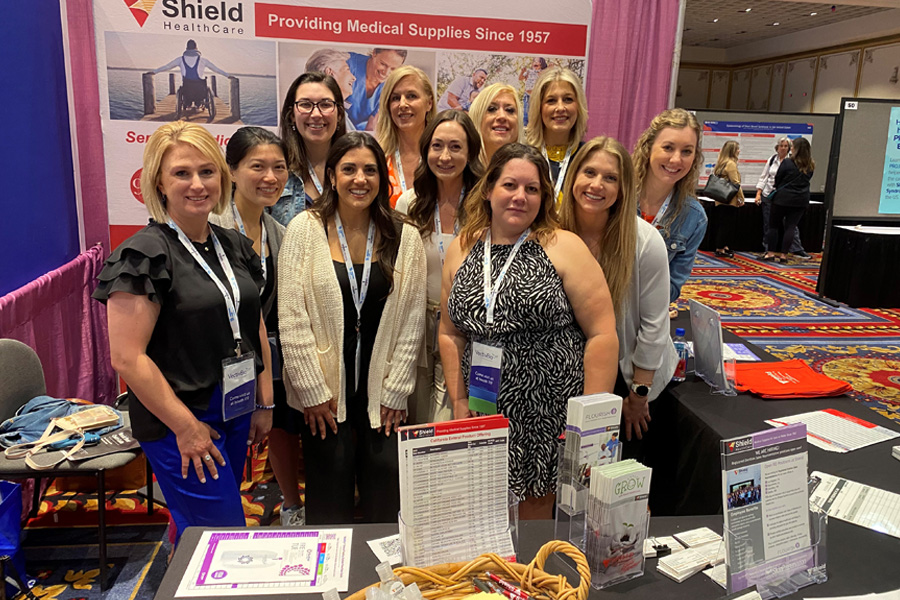If you are unable to meet your nutritional needs by mouth, a feeding tube provides a way to obtain life-saving nutrients. Your doctor may have prescribed this method of feeding to deliver formula and water into your stomach by way of your feeding tube. See the answers below to a few common questions about bolus/syringe feeding.
How long does a bolus feed or syringe feed take?
A bolus feed should take about as long as a meal! For many people, this is approximately 20-30 minutes from beginning to end, including preparation and cleanup. You should be sitting upright for your feeding and for 30 to 60 minutes afterward.
How frequently do I bolus feed?
Individuals who can tolerate a typical meal-sized volume of food in one sitting can be fed by bolus feeding. Feedings are most often given every 4 to 6 hours during waking hours. Depending on your unique needs, this may vary. Follow the schedule provided by your clinicians on how frequently to feed and how much water to give between feedings.
What supplies do I need to bolus feed?
How do I bolus feed?
Below are step-by-step instructions for bolus feeding/syringe feeding.
- Wash your hands to reduce the risk of bacterial contamination.
- Collect your supplies.
- Check the skin around your feeding tube. If you notice redness, pain, irritation or leaking around the site, notify your doctor or nurse.
- Check the position of your feeding tube. You should have about the width of a dime between your skin and the external bolster. In most cases, the tube should turn freely. Do not rotate a J or GJ tube.
- If you have a low profile feeding tube, attach the extension tubing. To avoid discomfort, prime the extension tubing to remove air before attaching it to the feeding tube. You can prime it with water (see flush instructions in #6 below) or you can move directly to the feeding and prime it with formula.
- If you have a standard gastrostomy tube, or if your extension tubing needs flushing, flush the tube with water before the feeding. Flushing your tube before and after feedings helps to clear out any formula or medication residual to prevent clogging of your tube:
- Place the tip of the syringe in the water and pull back on the plunger to draw up 30 to 60 milliliters of water (or the amount advised by your healthcare professional). Children with G-tubes typically only need a small flush. Ask your healthcare professional how much water should be used to flush your tube.
- Open your feeding port and flush the tube by slowly pushing on the syringe’s plunger.
- Clean off the outside of your formula container with a clean towel and open it.
- Remove the plunger from the syringe.
- Attach the syringe to your tube port, holding up the tube and syringe with one hand. Alternatively, you can devise or purchase a stand to hold the syringe.
- Slowly pour formula into the syringe with your other hand. Allow it to flow by gravity into your stomach. It should take around 15 minutes to deliver a can of formula. Feed more slowly or more quickly depending on your tolerance. You can make the formula flow faster or slower by raising the syringe higher or lower in relation to your stomach. You can also push the formula in with the plunger to speed it up.
- If you experience any symptoms of feeding intolerance, such as nausea or vomiting, diarrhea or abdominal bloating, contact your healthcare professional.
- Flush your tube as above with the amount of water advised by your healthcare professional.
- Close the feeding port and disconnect the extension tubing (if applicable).
- Refrigerate any leftover formula for use within 24 hours.
- Wash and dry all equipment and your hands. Use a new syringe each day.
To watch a video on how to bolus feed, click here:
How often should I flush my tube?
Ideally, you should flush before and after each feeding and before and after medication administration. please check with your healthcare provider regarding how much water you should use.
This information is for educational purposes only and does not replace the advice of your physician or other health care professional. If you have questions about your health, please contact your health care professional.







